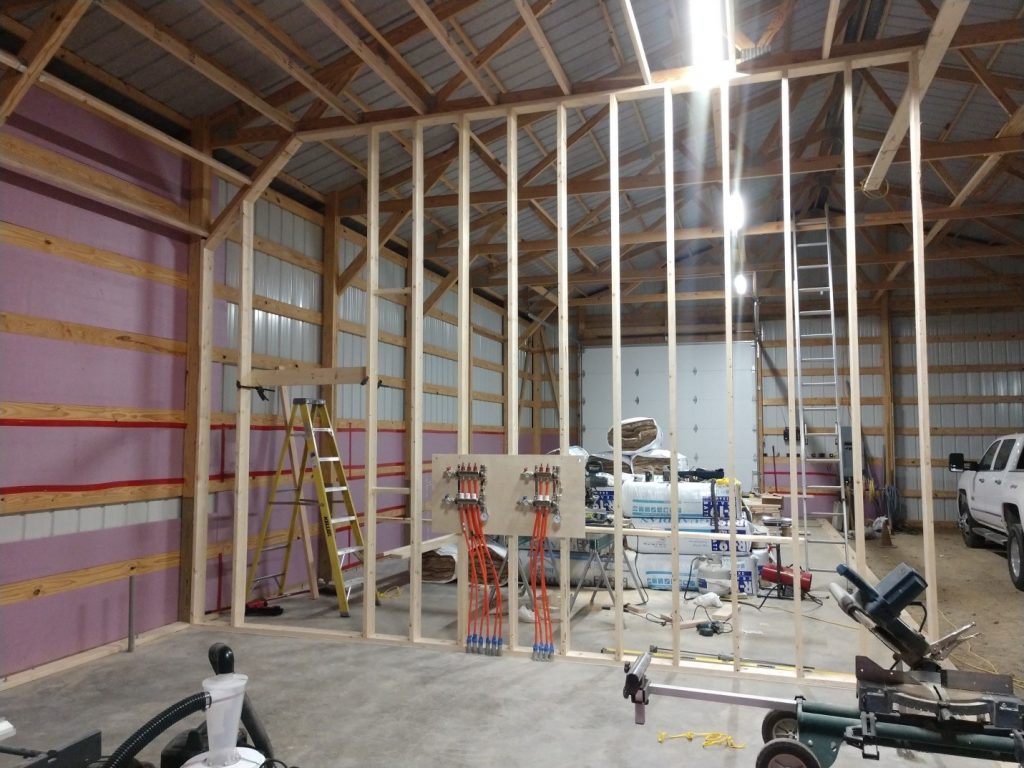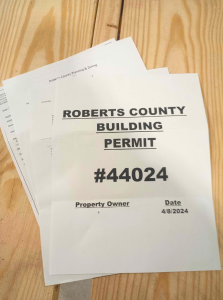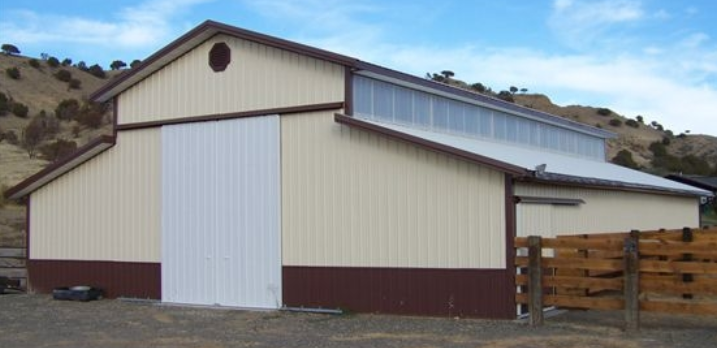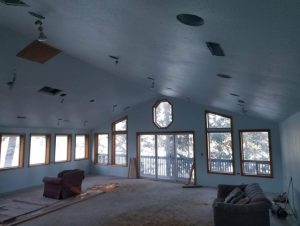Do I Need Any Additional Vapor Barrier?

Reader TOM in NEW LONDON writes:
“Have a 40 x 60 pole barn which I have poured a 20 X 60 6″ concrete floor with radiant heat. I have installed 1 1/2″ R 7.5 rigid pink board between the 2 X 6 side boards against the steel. I will be installing R 19 kraft faced insulation in the 2 x 6 side walls and R 38 kraft faced insulation in the ceiling. The area above the ceiling insulation is completely open to the roof. Eaves soffit is vented. Do I need any additional vapor barrier? Have I done anything wrong?
Thank you.”
Some basic commentary, from your photo, to begin with. I obviously do not have the benefit of having your building’s engineered plans or sealed truss drawings to reference, so some of my commentary will be based upon best guesses.
I would sincerely doubt your building’s roof trusses have been designed to support loads induced into them from knee braces. Please read more in regards to this subject here: https://www.hansenpolebuildings.com/2012/01/post-frame-construction-knee-braces/. Your first step should be to contact the truss manufacturer to verify ability of your building’s trusses to withstand loads from knee braces. With an assumption trusses were not so designed, second step will be to contact the engineer who designed your building to find out if your building will still be structurally sound with knee braces removed. If, by some chance, an engineer was not engaged to produce your building plans, a competent one should be retained to do an analysis of your situation.
Any lumber in contact with concrete needs to be pressure preservative treated – this would include plates between columns and bottom plate of your framed stud wall. You really do not want to have these boards decay within finished walls.
If you do not have a well-sealed vapor barrier beneath your concrete slab-on-grade, you need to use a good sealant over top of it.
Moving forward, to your question at hand. In order to install kraft faced batts along your building’s sidewalls, you will need to add additional framing. Most folks place another set of wall girts upon column insides. If so, in your case, then R 19 batts are not going to be adequate – as they will leave an air gap between batts and pink board. My recommendation would be to use BIBs (https://www.hansenpolebuildings.com/2011/11/bibs/) in walls, with a vapor barrier to inside face of framing before adding the finished wall material. To get best thermal performance, a layer of closed cell foam insulation board can be glued to wall framing inside, then glue gypsum wallboard (sheetrock) or your choice of other products to insulation boards. This inner layer of foam board, if joints are sealed, will act as your vapor barrier. Have your building engineer confirm your building walls will be stiff enough to keep drywall joints from cracking.
Now – roof system. Before adding a ceiling, verify your building’s roof trusses will support this added weight. Most post frame building trusses will not! Trusses should have a minimum bottom chord dead load of five psf (pounds per square foot) to support framing and drywall. Your building does not have a vapor barrier between roof purlins and roof steel. Only cure for this now will be to have two or more inches of closed cell foam insulation sprayed to the underside. If you fail to do this, you will have moisture/condensation issues in your attic. You also do not want to have a vapor barrier in your ceiling line – so kraft faced batts are out. I’d recommend 15-20 inches of blown in fiberglass insulation. Make sure to not block air intake from soffits. If your ridge cap isn’t currently vented, it needs to be.
Tom could have avoided a great deal of pain and expense had he and his building provider been communicating in regards to climate controlling this structure. Unfortunately, most post frame building kit suppliers and contractors are focused only upon providing a low price, instead of best design solution for their clients.









